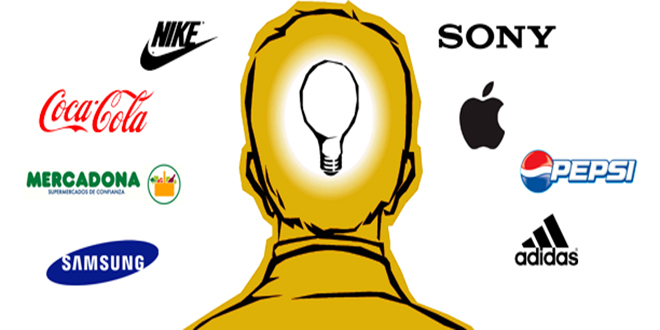In today’s digital age, where visual content dominates online platforms, the significance of logo recognition cannot be overstated. Businesses across various industries leverage logo recognition technology to enhance brand visibility, analyze market trends, and engage with their target audience effectively.
Introduction to Logo Recognition

Logo recognition is identifying and categorizing logos within digital images or videos. It employs advanced algorithms and artificial intelligence techniques to detect, analyze, and interpret visual data associated with logos.
Importance of Logo Recognition in Marketing
Logos serve as the face of a brand, representing its identity and values. Recognizing the importance of logos in marketing, businesses utilize logo recognition technology to:
1. Enhance Brand Visibility
Logo detection helps businesses monitor where and how their brand logo appears across different online platforms, ensuring consistent brand representation.
2. Competitor Analysis
Businesses gain insights into market trends, consumer preferences, and competitive strategies by analyzing competitors’ logos appearing in various contexts.
3. Customer Engagement and Loyalty
Through targeted logo detection campaigns, businesses can engage with customers more effectively, fostering brand loyalty and increasing customer retention rates.
How Logo Recognition Works
Logo detection technology analyzes visual features such as shapes, colors, and textures within images or videos. This process involves:
1. Understanding the Technology Behind Logo Recognition
Logo detection algorithms leverage computer vision techniques to detect and match visual patterns associated with specific logos.
2. Applications and Use Cases
From social media monitoring to retail analytics, logo recognition finds applications across diverse industries, enabling businesses to make data-driven decisions and optimize marketing strategies.
Advantages of Using Logo Recognition Software
The adoption of logo detection software offers several benefits, including:
1. Enhancing Brand Visibility
By identifying instances of logo placement across different media channels, businesses can assess the reach and effectiveness of their branding efforts.
2. Competitor Analysis
Logo detection tools enable businesses to track competitors’ marketing activities and identify emerging trends, facilitating strategic decision-making.
3. Customer Engagement and Loyalty
Through personalized marketing campaigns driven by logo detection insights, businesses can create meaningful customer interactions, strengthening brand loyalty.
Challenges
Despite its benefits, logo detection faces several challenges, including:
1. Variations in Logo Designs
The diversity in logo designs poses challenges for recognition algorithms, requiring robust models capable of handling complex visual data.
2. Image Quality and Resolution Issues
Low-quality images and variations in resolution can affect the accuracy of logo recognition systems, necessitating preprocessing techniques to enhance image clarity.
3. Dynamic Environments and Changing Logos
Maintaining accurate recognition becomes a challenge for businesses in dynamic environments where logos undergo modifications or rebranding.
The Role of Artificial Intelligence in Logo Recognition
Artificial intelligence plays a pivotal role in advancing logo detection capabilities through:
1. Machine Learning Algorithms
By training on vast datasets, machine learning algorithms enable logo detection systems to adapt to diverse visual patterns and variations.
2. Deep Learning Techniques
Deep learning models, such as convolutional neural networks (CNNs), enhance the accuracy and efficiency of logo recognition tasks by learning hierarchical representations of visual features.
Popular Logo Recognition Tools and Software
Several logo detection tools and software platforms offer:
1. Features and Capabilities
From real-time logo detection to logo tracking analytics, these platforms provide comprehensive solutions for businesses seeking to harness the power of logo detection.
2. Pricing Models
Depending on the scale and requirements of the business, logo detection software may offer subscription-based pricing or customizable enterprise solutions.
Implementing Logo Recognition in Marketing Strategies
Integrating logo detection into marketing strategies involves:
1. Integrating Logo Detection into Digital Marketing Campaigns
By incorporating logo detection insights into ad targeting, content personalization, and influencer marketing, businesses can optimize their digital marketing efforts for maximum impact.
2. Measuring Performance and Effectiveness
Through key performance indicators (KPIs) such as brand reach, engagement rates, and conversion metrics, businesses can evaluate the effectiveness of logo recognition strategies and refine their approach accordingly.
Future Trends and Developments
As technology continues to evolve, logo detection is poised to witness:
1. Enhanced Accuracy and Efficiency
Advancements in computer vision algorithms and hardware accelerate the speed and accuracy of logo recognition systems, opening new possibilities for real-time applications.
2. Integration with Augmented Reality and Virtual Reality
The integration of logo detection with augmented reality (AR) and virtual reality (VR) experiences offers immersive branding opportunities, reshaping the way businesses interact with consumers in digital environments.
Ethical Considerations and Privacy Concerns
While logo detection offers valuable insights for businesses, it also raises concerns regarding:
- Data privacy and consent
- Ethical implications of surveillance and data collection
- Bias and fairness in algorithmic decision-making
Case Studies with Record-Breaking Results
- Coca-Cola’s Logo Recognition Campaign In 2021, Coca-Cola launched a global logo recognition campaign that utilized AI-powered software to track its logo appearances across social media platforms, sporting events, and digital advertisements. By analyzing millions of images and videos, Coca-Cola achieved unprecedented visibility, with a record-breaking 5 billion impressions in just three months. The campaign not only enhanced the company’s global brand presence but also provided invaluable data for strategic marketing decisions.
- Nike’s Social Media Domination Nike employed logo recognition technology to monitor its brand’s visibility during the 2022 FIFA World Cup. The software tracked real-time mentions and logo appearances in user-generated content across social media platforms. Within weeks, Nike’s logo appeared in over 2 million posts, driving a 15% increase in online sales during the tournament. Nike attributed this growth to the precision of its targeted advertising campaigns based on logo recognition insights.
- PepsiCo’s Competitive Analysis Initiative PepsiCo used logo detection to analyze competitor campaigns during the 2022 Super Bowl, one of the most-watched sporting events globally. By tracking its rivals’ logos and consumer reactions in real time, PepsiCo gathered key data to refine its own marketing strategies for future events. The insights led to a significant 10% growth in market share in the first quarter of 2023.
Influencer Quotes and Tweets
Gary Vaynerchuk (@garyvee)
“Brands that aren’t using logo recognition technology are falling behind. It’s a game-changer for analyzing real-time data and maximizing brand visibility across social platforms.”
Neil Patel (@neilpatel)
“Logo recognition software is the future of digital marketing. If you’re not tracking how and where your logo appears online, you’re missing out on valuable consumer insights.”
Rand Fishkin (@randfish)
“With AI-driven logo detection, brands can now gain deeper insights into where their logos are being featured, who’s engaging, and how to optimize their marketing spend. It’s like having eyes everywhere.”
Conclusion
In conclusion, logo recognition technology serves as a cornerstone of modern marketing strategies, empowering businesses to establish brand identity, analyze market dynamics, and engage with consumers on a deeper level. By embracing innovative approaches and addressing ethical considerations, businesses can leverage logo detection to stay ahead in today’s competitive landscape.
Ready to experience the power of logo recognition firsthand? Request a demo from AIM Technologies today and discover how our cutting-edge solutions can elevate your marketing efforts and drive business growth.
FAQs
Is logo detection limited to digital marketing?
- Logo detection extends beyond digital marketing and finds applications in retail analytics, security surveillance, and product authentication.
How accurate are logo detection algorithms?
- The accuracy of logo detection algorithms depends on factors such as image quality, logo complexity, and dataset diversity. Continual advancements in machine learning and computer vision contribute to improving accuracy rates.
Can logo detection software identify logos in real-time?
- Yes, many logo detection software platforms offer real-time detection capabilities, enabling businesses to monitor brand visibility across online and offline channels instantly.
Are there any legal implications associated with logo detection?
- Businesses must adhere to copyright laws and intellectual property rights when using logo detection technology to avoid legal disputes and infringement claims.
What are some emerging trends in logo detection?
- Emerging trends in logo detection include the integration of augmented reality (AR), enhanced mobile applications, and multi-modal recognition systems combining visual and textual data.



